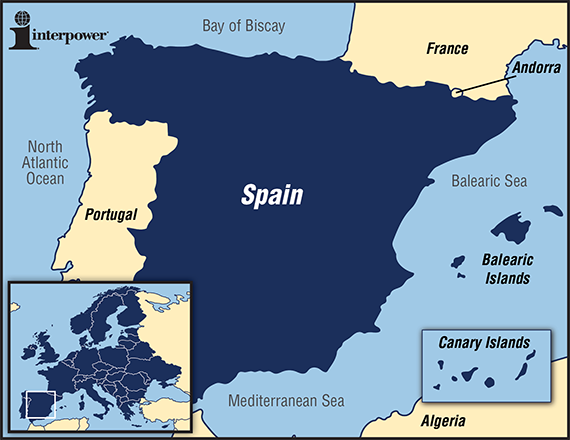Exporting to Spain

| SPAIN | |
|---|---|
| Actual population* | Population world ranking |
| 47,737,941 | 29 |
| Actual GDP (PPP)* | GDP world ranking |
| $1.389 trillion | 15 |
| Actual GDP (per capita)* | GDP (per capita) world ranking |
| $30,100 | 47 |
*See the end of this blog for definitions
As a significant market in the European Union, Spain offers many business opportunities with notable strengths and benefits.
There are a number of regional markets within Spain that come together in Madrid and Barcelona. Finding a local representative who can be a valuable partner in providing local and regional connections can be a first step in exploring business opportunities in Spain. It is recommended to obtain legal advice to assist with the process. The ICEX Spain Trade and Investment offers “Invest in Spain” as a tool for companies to use, plus a “Guide to Business in Spain” is available. Spain may also be a gateway to expanding potential markets in the Latin American and Caribbean countries.
Knowledge of business customs is essential as well as knowing the culture. Learn how to open and close a business meeting as well as what the appropriate greeting should be. Professional business attire is important. Discover what good business relationships should include, such as face-to-face meetings.
A variety of resources is available to consult for more information about market entry strategies, doing business in Spain, business customs, and import/export requirements. Among them are the United States Commercial Service and the United Kingdom Trade and Investment.
Located in Southern Europe, Spain joined the European Union in 1986. The EU is a Customs Union which consists of member countries who have formed a single region for customs purposes. Goods that have been imported legally can circulate throughout the EU with no further customs checks. To learn more about the customs regulations, among the sources to consult are the European Commission Export Helpdesk and European Commission Taxation and Customs Union. Conducting due diligence in accordance with all of the regulations is essential.
Some products may require safety testing and certification for this market. While not all products are required to have a CE mark, others do require one. When affixing the CE mark to a product, a manufacturer affirms that the product meets the necessary requirements and can be sold throughout the EU.
There are also EU regulations that need to be followed, so it’s important to know what is required in Spain. Among them are:
- REACH is the European regulation for Registration, Evaluation, Authorization, and Restriction of Chemicals. The European Commission works closely with ECHA (European Chemicals Agency) in the implementation of this regulation.
- RoHS stands for Restriction of Hazardous Substances. It restricts the use of certain hazardous materials found in electrical and electronic products.
- WEEE stands for Waste from Electrical and Electronic Equipment. WEEE requires the treatment, recovery, and recycling of electric and electronic equipment.
.
Spanish is the main language to communicate in, even though certain regions in Spain have official second languages. Also, while there are business people who speak English, it’s best to have correspondence and company literature in Spanish.
In Spain, the voltage used is 230V at 50Hz. The most frequently specified plug pattern is the Continental European plug.
Sources:
www.export.gov/spain
www.gov.uk
www.investinspain.org
Sources for European Union:
www.ec.europa.eu
www.echa.europa.eu
www.rohsguide.com
www.exporthelp.europa.eu
www.europa.eu
www.export.gov/europeanunion
*Source: www.cia.gov/library/publications/the-world-factbook/index.html
Country comparison—Population: Population compares estimates from the US Bureau of Census based on statistics from population censuses, vital statistics, registration systems, or sample surveys pertaining to the recent past and on assumptions about future trends. (July 2014 est.)
Country comparison—GDP (Purchasing Power Parity): GDP (purchasing power parity [PPP]) compares the gross domestic product (GDP) or value of all final goods and services produced within a nation in a given year. A nation’s GDP at PPP exchange rates is the sum value of all goods and services produced in the country valued at prices prevailing in the United States. (2013 est.)
Country comparison—GDP – per capita (PPP): GDP – per capita (PPP) compares GDP on a purchasing parity basis divided by population as of 1 July for the same year. (2013 est.)






